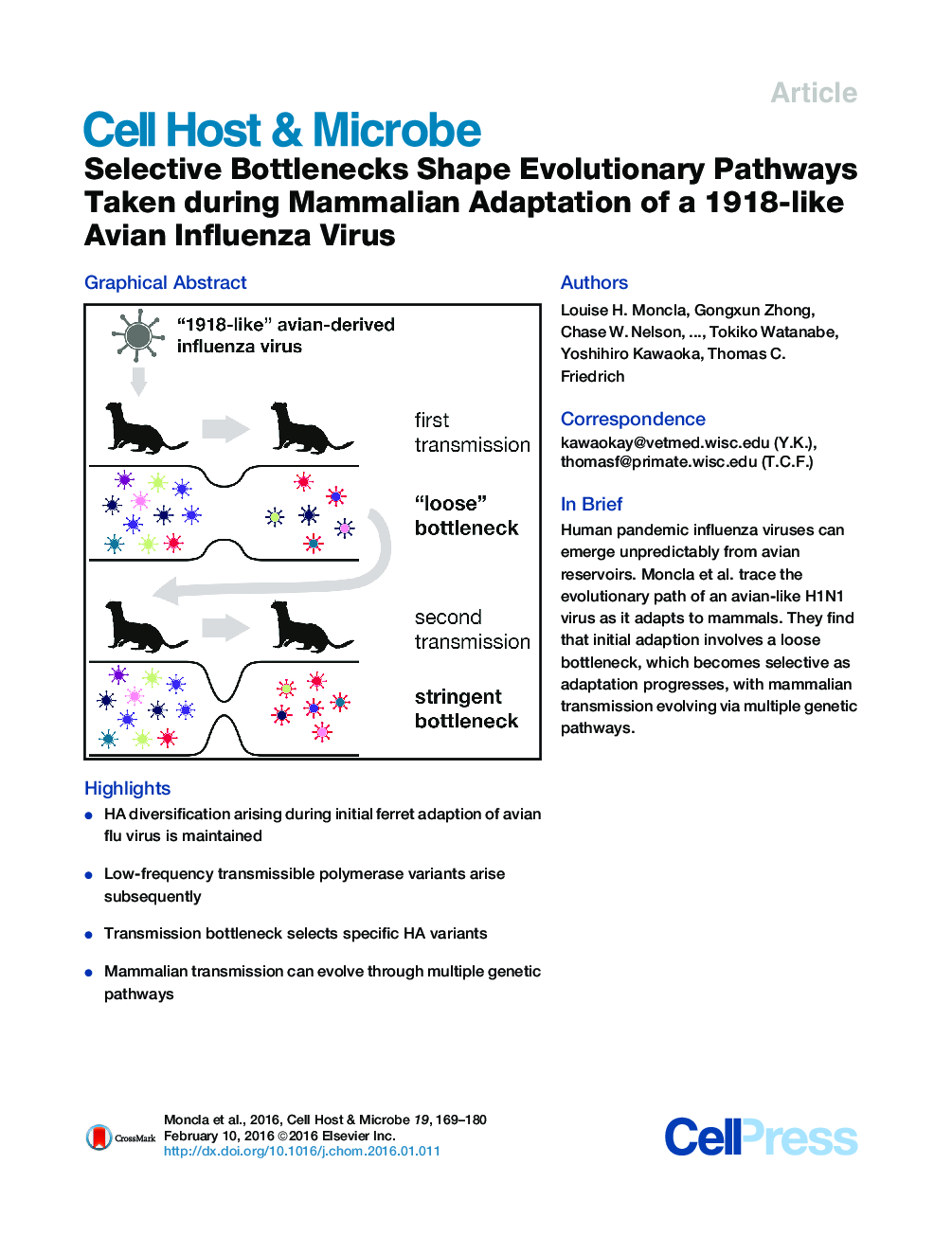| کد مقاله | کد نشریه | سال انتشار | مقاله انگلیسی | نسخه تمام متن |
|---|---|---|---|---|
| 4360866 | 1301322 | 2016 | 12 صفحه PDF | دانلود رایگان |
• HA diversification arising during initial ferret adaption of avian flu virus is maintained
• Low-frequency transmissible polymerase variants arise subsequently
• Transmission bottleneck selects specific HA variants
• Mammalian transmission can evolve through multiple genetic pathways
SummaryAvian influenza virus reassortants resembling the 1918 human pandemic virus can become transmissible among mammals by acquiring mutations in hemagglutinin (HA) and polymerase. Using the ferret model, we trace the evolutionary pathway by which an avian-like virus evolves the capacity for mammalian replication and airborne transmission. During initial infection, within-host HA diversity increased drastically. Then, airborne transmission fixed two polymerase mutations that do not confer a detectable replication advantage. In later transmissions, selection fixed advantageous HA1 variants. Transmission initially involved a “loose” bottleneck, which became strongly selective after additional HA mutations emerged. The stringency and evolutionary forces governing between-host bottlenecks may therefore change throughout host adaptation. Mutations occurred in multiple combinations in transmitted viruses, suggesting that mammalian transmissibility can evolve through multiple genetic pathways despite phenotypic constraints. Our data provide a glimpse into avian influenza virus adaptation in mammals, with broad implications for surveillance on potentially zoonotic viruses.
Graphical AbstractFigure optionsDownload high-quality image (188 K)Download as PowerPoint slide
Journal: - Volume 19, Issue 2, 10 February 2016, Pages 169–180
